How to water a phalaenopsis orchid?
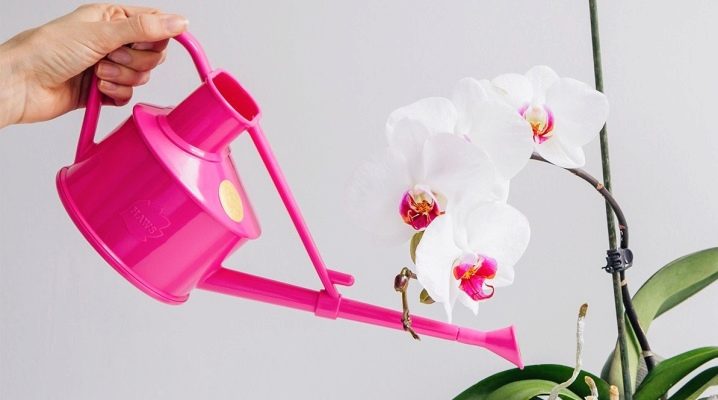
Exotic plants of the orchid family are increasingly attracting lovers of indoor floriculture. Perhaps, Phalaenopsis enjoys special love, which delights with its delicate flowers, similar to tropical multi-colored butterflies. However, sometimes one hears opinions that such orchids are too capricious and difficult to grow. Indeed, there are features in care - you need to know them. And it's actually not that hard to follow these rules. One of the highlights is watering.
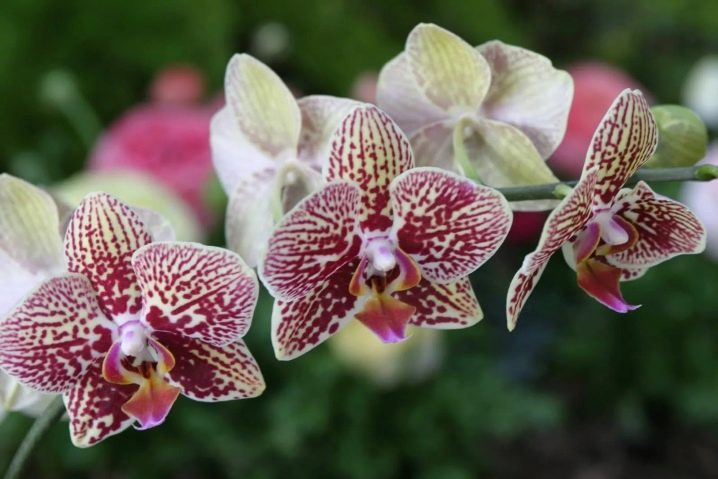
Plant features
Phalaenopsis belongs to epiphytic plants, that is, it receives moisture from the air and its root system is practically open. The orchid is able to accumulate liquid in the roots due to the fact that they are covered with velamen - a layer of dead cells, resembling a sponge in composition. But, if unused moisture is held inside for too long, decay can occur.
Phalaenopsis is not planted in the soil, but in a special breathable substrate, consisting mainly of pieces of bark.
The plant tolerates overdrying of the roots much better than overmoistening, but it is also not worth testing it for drought resistance. These features are responsible for special attention to watering.
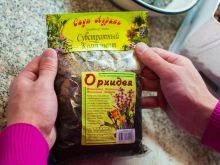
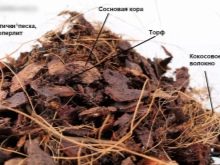

When to water?
The water requirement of plants depends on growing conditions, temperature and humidity. More often than 1-2 times a week, phalaenopsis does not need to be watered in any season, except in hot summer. But this is a rough graph. In order not to flood the roots, you should focus on the complete drying of them and the substrate. You can verify this by several signs.
- Experienced growers often determine the need for watering by the weight of the pot. Dried substrate is much lighter than wet substrate. Beginners will have to experiment by holding a watered plant in their hands several times and comparing it to its own weight after about 7-10 days.
- To determine the moisture content of the contents of the pot, you can simply dip a chip or wooden stick (for example, a Chinese one for sushi) there. If it turns out to be completely dry when removed, it's time to water.
- Also, the color of the roots serves as a guideline in this matter. When wet, their color is bright green; when dry, the root shoots turn gray with a slight silvery tinge. This is especially noticeable when growing orchids in transparent containers, but in ordinary pots there are aerial roots on top.
- Finally, you can always touch the substrate with your finger and be guided by your own feelings.
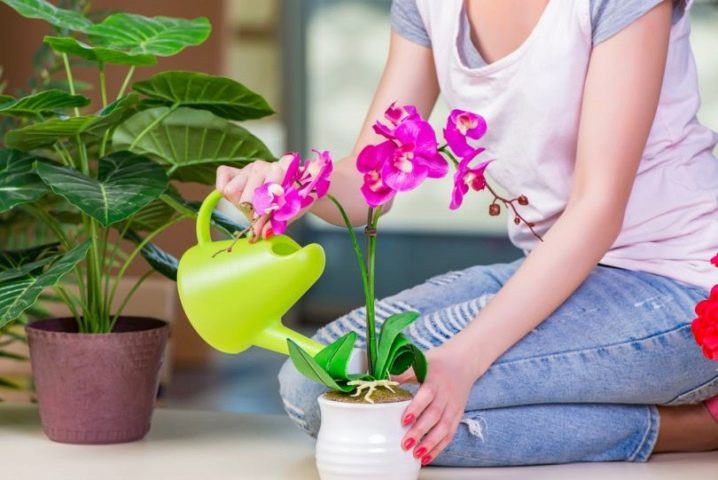
Like any other plants, orchids are watered more often in summer, since everything dries out faster in warm weather, and less often in winter.
But in different rooms and conditions may be different, so there can be no unequivocal recommendations here - each grower will have to draw up his own watering schedule. The main principle is that it is better to dry out a little than to pour. Some even do this: if it seems that it is already possible to water, they wait another 1-2 days, then it’s definitely time.
There are no strict requirements for the time of day for watering. Since the place for phalaenopsis is usually chosen fairly well lit, but without direct sunlight, there will be no danger of "burning". The only caveat is that you shouldn't water abundantly in the late evening. This is due to the fact that the roots of this plant are not able to absorb moisture in the dark, so they will dry out longer.
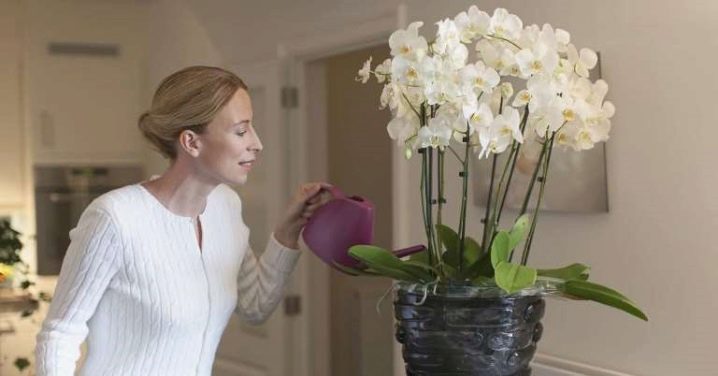
The ways
There are several ways to "water" a green pet.
Immersion
For phalaenopsis, this option is the most suitable. For a successful dive, you need to prepare a container larger than the flower pot. If you have multiple plants, you can simply grab a basin that will fit them all at once. Orchids are placed in a container and water is poured into it with a watering can so that it covers the pots and pours into the substrate. It usually takes 20 minutes to thoroughly moisturize the roots and the pieces of bark in which they are located.
After this procedure, you need to allow excess moisture to drain from the pots, so the most convenient place for such watering at home is a bath. Plants extracted from a container of water are placed in it.
Only when all excess liquid drains through the drainage holes, the orchids are returned to their permanent places.
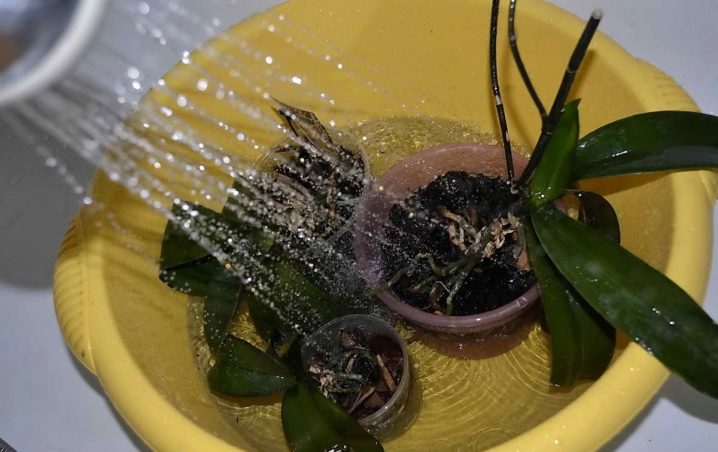
The usual way
Watering phalaenopsis from a watering can using the usual method is also possible. But since water flows through the substrate quickly and does not have time to properly absorb, such watering is likely to be insufficient.
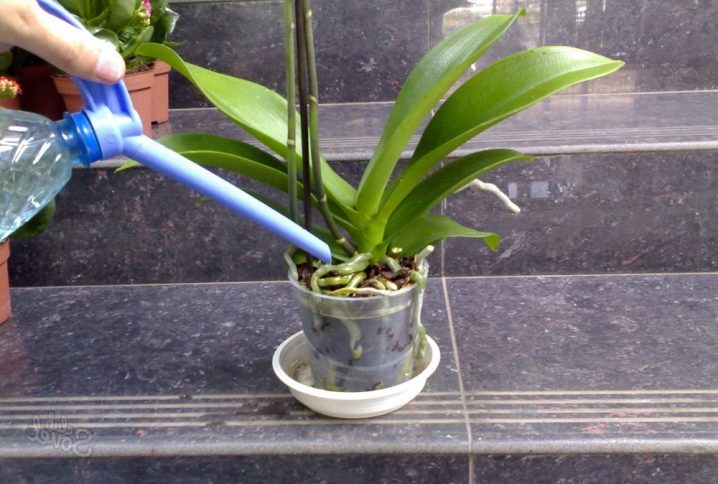
From the pallet
If the orchid is watered in a pan, it will take the required amount of moisture, but provided that this container is of sufficient volume and the pot has wide drainage holes. But with prolonged stagnation of water, there is a danger of root rot. Therefore, this method can be used only as a last resort, when it is not possible to water the plants regularly.

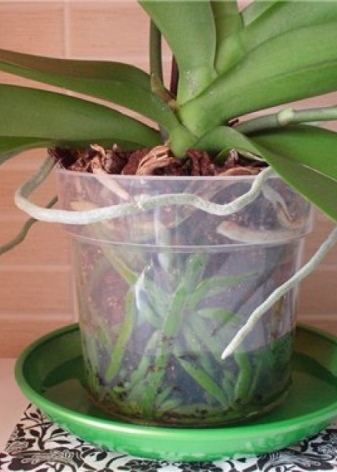
Hot shower
Phalaenopsis is able to absorb moisture not only through the roots, but also through the leaves. In addition, the air in heated rooms in winter can be too dry. For these reasons, it is recommended to regularly spray the plants with hot (up to 40 ° C) water. Such a procedure will help to remove dust from the leaf plates, and will stimulate flowering.
If the drops remaining on the leaves are carefully washed with napkins each time, then the orchid shower can be done quite often - it will not harm them.
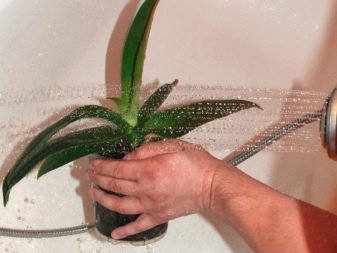
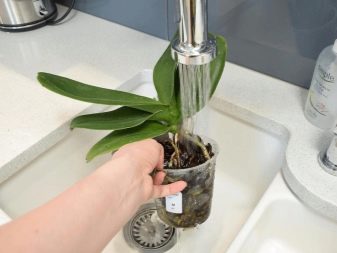
Post-transplant actions
When phalaenopsis is transplanted, it is recommended to wash its roots from the old substrate, and thus the plant already absorbs a certain amount of moisture. New pot filler is usually soaked before planting. And to avoid waterlogging and decay of the roots, the transplanted orchids should not be watered for the first week. Then everything goes as usual.
If the plant is weakened, fertilizing can be applied along with watering. For example, take a teaspoon of granulated sugar for 1 liter of water. This "treat" should be used no more than 1 time per week.
Useful for orchids and succinic acid. It is enough to add it once a month.


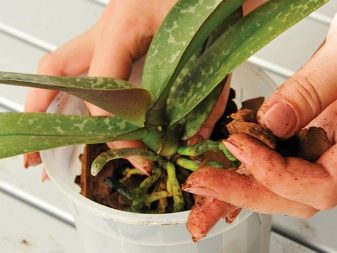

How to moisturize during flowering?
Blooming Phalaenopsis will likely need more frequent watering. You also need to focus on the above signs. When you have to move the plant to submerge it in water, you need to be especially careful not to break the long peduncle.
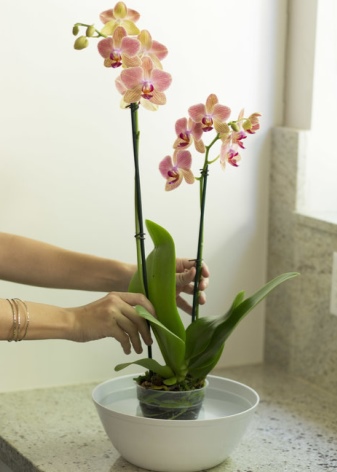

Water requirements
The quality of the liquid used for irrigation is important. Distilled water is a good option. There are no harmful substances in it, but also useful ones. Therefore, it should be enriched with fertilizers. You can use the usual water settled during the day. The main thing is that it is not too harsh: suspensions of metals can accumulate in the roots, which can lead to the death of plants.
If you provide the phalaenopsis with proper care, especially watering, then beautiful "butterflies" on graceful peduncles will not be long in coming.
For information on how to properly water the phalaenopsis orchid, see below.



























The comment was sent successfully.